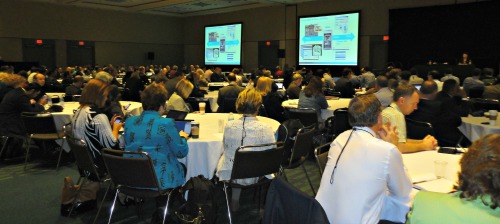Today in the Huffington Post, Blair Christie, Cisco Senior Vice President and Chief Marketing Officer, and Eric Schwarz, cofounder and CEO of Citizen Schools wrote about our organizations’ collective commitment to increase the number of students interested in science, technology, engineering, and math (STEM) subjects and careers.
Last week in Research Triangle Park, North Carolina, network engineers helped 50 student robotics teams compete in Aerial Assist, a game in which students program and operate robots to toss as many balls into a goal as possible — in just 150 seconds. Similarly, in San Jose, a group of women engineers at Cisco hosted 70 middle-school girls earlier this year as part of “National Engineering Week” to give them a glimpse into how cutting-edge technologies are developed in R&D labs.
These engagements, part of the US 2020 initiative announced at the White House Science Fair last year, reflect the urgent need to do more to encourage students to go into science, technology, engineering, and math (STEM) professions.
Three things are true in STEM: There are a lot of job openings. These jobs pay well. And there are not enough qualified people to fill these jobs. Today, the technology industry employs 6 million people. By 2018, the U.S. will face a projected shortfall of 230,000 qualified advanced-degree STEM workers. Meanwhile, the Bureau for Labor Statistics predicts that STEM jobs will grow 55 percent faster than non-STEM jobs over the next 10 years. The flow of talent into the STEM pipeline is limited. Without a dramatic change, the pressure will weaken further, and the flow of talent will slow to a trickle.
Read the complete blog on the Huffington Post.
Share:

 Continuous patient engagement (pre-, point-of, post-care)
Continuous patient engagement (pre-, point-of, post-care)

CONNECT WITH US